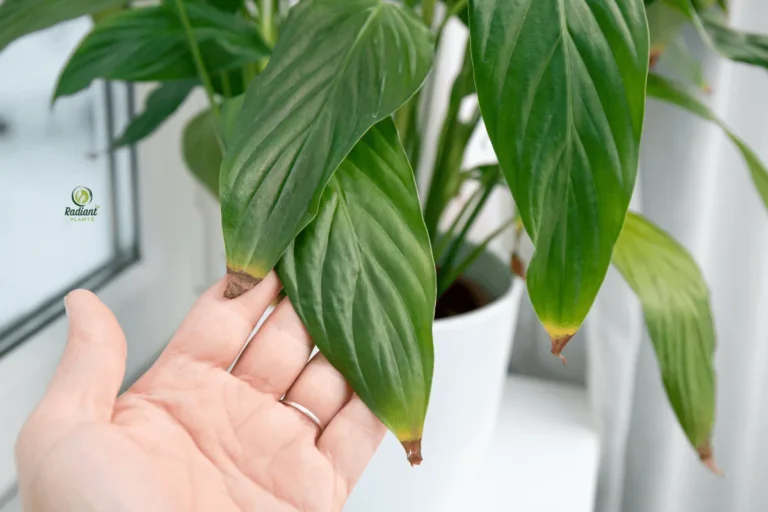How to Grow and care a Bleeding Heart Plant
Have you ever walked through a spring garden and found yourself drawn to a plant with the most peculiar heart-shaped blooms? Those enchanting flowers—perfect little hearts that appear to drip a single white teardrop—belong to the bleeding heart plant, one of gardening’s most cherished woodland treasures.
Bleeding heart plants (Lamprocapnos spectabilis, formerly Dicentra spectabilis) transform shaded garden corners into magical spaces with their arching stems laden with distinctive pink and white flowers. Their romantic appearance belies their surprising resilience and relatively straightforward care requirements, making them accessible even for gardeners still developing their green thumbs.
Whether you’re looking to add visual drama to a woodland garden, seeking the perfect specimen for that challenging shady spot, or simply captivated by their unique beauty, bleeding heart plants reward your attention with a springtime display unlike any other perennial in the garden.
In this comprehensive guide, you’ll discover everything needed to successfully grow and nurture these woodland beauties—from selecting the right variety for your garden to understanding their fascinating growth cycle and providing the specific conditions they need to thrive year after year. By following these expert recommendations, you’ll soon enjoy your cascade of perfect little hearts bringing romance and charm to your garden landscape.
Table of Contents
Table of Contents
The Beauty and History of Bleeding Heart Plants
What Are Bleeding Heart Plants?



Bleeding heart plants (botanically identified as Dicentra spectabilis or Lamprocapnos spectabilis) represent the epitome of spring-flowering perennial elegance. Native to Asian woodlands, these botanical treasures have secured their place in gardeners’ hearts worldwide through centuries of cultivation.
What makes them truly unforgettable? Their distinctive heart-shaped pink and white blooms that dangle gracefully from arching stems, resembling delicate earrings or, as some romantically suggest, hearts that gently weep. The foliage emerges in spring as lacy, fern-like leaves that provide an appealing backdrop for the showstopping flowers.
The Cultural Significance and History
The bleeding heart plant carries rich historical significance that enhances its garden value:
- These perennials naturally grace forest regions across Korea, China, and Japan
- Western gardens welcomed them in the 1840s thanks to plant explorer Robert Fortune
- Victorian gardeners immediately embraced them for their deeply romantic symbolism
- Traditional folklore weaves them into poignant tales of unrequited love
- Gardening traditions consider them quintessential elements of cottage and woodland garden designs
The plant’s journey from Eastern forests to worldwide garden favorite speaks to its enduring appeal—few plants combine such distinctive aesthetics with reliable garden performance.
How to Grow Healthy Bleeding Heart Plants
Success with bleeding hearts begins with understanding their preferences and providing conditions that mirror their natural woodland habitat. Let’s explore everything you need to know about cultivating these romantic bloomers.
Understanding Your Bleeding Heart Varieties
Different types of bleeding heart plants offer varying appearances and growing habits, allowing you to select varieties that perfectly match your garden needs:
| Elegant white version of the common | Scientific Name | Flower Color | Height | Special Features |
|---|---|---|---|---|
| Common Bleeding Heart | Lamprocapnos spectabilis | Pink with white | 24-36″ | Classic heart shape, spring bloomer |
| Alba Bleeding Heart | Lamprocapnos spectabilis ‘Alba’ | Pure white | 24-36″ | Elegant white version of common |
| Fernleaf Bleeding Heart | Dicentra formosa | Pink or white | 12-18″ | Longer bloom time, more compact |
| Luxuriant Bleeding Heart | Dicentra ‘Luxuriant’ | Deep rose-pink | 12-15″ | Heat tolerant, reblooms |
| Valentine Bleeding Heart | Dicentra ‘Valentine’ | Deep red | 24-30″ | Vibrant color, red stems |
Each variety brings unique characteristics to your garden palette. The classic common bleeding heart delivers the most dramatic floral display but enters dormancy earlier, while fernleaf types offer extended season interest with their longer-lasting foliage.
Perfect Planting Conditions for Success
When to Plant Bleeding Hearts
Timing matters significantly when establishing bleeding heart plants:
- Spring planting: Wait until after your region’s last frost date for optimal establishment
- Fall planting: Allow at least 6 weeks before the first frost to encourage root development
- Ideal temperature range: Plants establish best when temperatures hover between 55-75°F
Nursery-grown plants typically establish more rapidly than bare-root specimens, though both perform admirably when given appropriate care during their settling-in period.
Where to Plant: Finding the Perfect Spot
The secret to thriving bleeding heart plants lies in recreating their natural woodland habitat conditions:
- Light requirements: Seek out partial shade to dappled sunlight (morning sun with afternoon shade represents the sweet spot)
- Soil conditions: Provide rich, consistently moist, well-draining soil generously amended with organic matter
- pH preference: Slightly acidic to neutral soil (6.0-7.0) supports optimal nutrient uptake
- Spacing: Allow 24-30 inches between plants to accommodate their mature spread
Remember that eastern and northern exposures typically provide ideal light conditions, while western and southern placements may require additional protection from intense afternoon sun, particularly in warmer growing regions.
Step-by-Step Planting Guide
Follow these six straightforward steps for planting success:
- Prepare your planting area by incorporating 2-3 inches of quality compost or well-rotted manure
- Dig a hole approximately twice as wide as the root ball but no deeper
- Position your plant carefully with the crown (where stems meet roots) precisely at soil level
- Backfill with amended soil and firm gently to eliminate air pockets
- Water thoroughly immediately after planting to settle the soil around the roots
- Apply 2-3 inches of organic mulch around the base, keeping it several inches away from stems
This careful planting approach establishes conditions that encourage robust root development during the critical establishment phase.
Plant Easy To Grow, Shade-Loving Bare-Root Bleeding Hearts!
Bleeding Heart Plant Care Throughout the Seasons
Understanding bleeding heart plants’ seasonal needs helps you provide appropriate care year-round, ensuring these perennials return with increasing vigor each spring.
Spring Care: Supporting Vigorous Growth
Spring represents the bleeding heart’s prime growing season, requiring attentive care:
- Begin fertilization programs when fresh growth emerges from the soil
- Monitor soil moisture carefully as plants enter their rapid growth phase
- Install decorative stakes or supports for taller varieties before they reach full height
- Remain vigilant for early-season pests and diseases that might compromise performance
This early-season care establishes conditions for spectacular flowering displays that typically begin in mid-spring and continue for several weeks.
Summer Care: Managing the Dormancy Period
Perhaps the most misunderstood aspect of bleeding heart plants involves their natural summer dormancy cycle:
- Expect foliage to gradually yellow and die back after flowering concludes (especially prominent in common varieties)
- Gradually reduce watering frequency once dormancy signals appear
- Resist the urge to remove foliage until it turns completely yellow
- Incorporate companion perennials strategically to fill visual gaps when bleeding hearts retreat
- Consider integrating fernleaf varieties (Dicentra formosa) for extended seasonal presence
Understanding this dormancy cycle prevents unnecessary concern when plants begin their natural retreat—remember, this represents a normal adaptation rather than a care failure.
Fall and Winter Care: Preparing for Dormancy
Proper fall and winter preparations ensure robust spring reemergence:
- Cut back any remaining dead foliage after your first autumn frost
- Apply a fresh protective layer of mulch for winter insulation
- Mark dormant plant locations clearly to prevent accidental damage
- Provide additional protection in USDA zones 3-4 with extra mulch or evergreen boughs
These simple preparations protect the dormant root system through winter’s challenges, ensuring vigorous spring growth when temperatures warm.
Essential Bleeding Heart Plant Maintenance
Regular maintenance keeps bleeding heart plants healthy and productive year after year. Let’s explore the core components of successful long-term care.
Watering Needs and Techniques
Bleeding heart plants flourish with consistent moisture that replicates their natural woodland habitat:
- Frequency: Maintain consistently moist soil conditions without allowing waterlogging
- Amount: Provide approximately 1 inch of water weekly (including rainfall contributions)
- Technique: Direct water carefully at the plant base to minimize foliar moisture
- Signs of improper watering:
- Too dry: Watch for wilting and browning leaf edges
- Too wet: Yellowing leaves may signal potential root concerns
Proper watering represents perhaps the most critical factor in bleeding heart success, particularly during active growth periods.
Fertilization for Optimal Blooms
Strategic fertilization supports abundant flowering:
- Apply balanced slow-release fertilizer (10-10-10) when spring growth initiates
- Incorporate compost as a side-dressing once annually for soil structure improvement
- Steer clear of high-nitrogen formulations that promote excessive foliage at flowering’s expense
- Discontinue feeding programs once plants signal dormancy approach
This measured approach to nutrition supports reproductive processes without encouraging problematic soft growth susceptible to pests and disease.
Pruning and Deadheading
Selective pruning maintains plant appearance and encourages prolonged blooming:
- Remove spent flower stalks promptly to stimulate additional bloom production
- Trim yellowing foliage progressively as dormancy advances
- Avoid aggressive pruning during active growth periods
- Perform a complete cutback after autumn’s first frost
These practices maintain garden aesthetics while supporting plant health throughout the growing season.
Dividing Bleeding Heart Plants
Bleeding hearts benefit tremendously from division every 3-5 years, revitalizing aging plants:
- Select early spring when new growth barely emerges as your division timing
- Carefully lift the entire plant using a garden fork rather than a shovel
- Separate rhizomes with a sharp, clean knife to minimize tissue damage
- Verify each division contains several viable eyes (growth points)
- Replant divisions immediately at their original growing depth
- Water thoroughly after replanting to eliminate air pockets
This periodic division maintains plant vigor, prevents overcrowding, and multiplies your garden’s bleeding heart presence—truly a win-win garden practice.
Propagating Bleeding Heart Plants
Expand your bleeding heart collection through these proven propagation techniques.
Division Method (Most Reliable)
The division approach outlined previously represents the most dependable propagation method, producing substantial plants that typically flower the following season.
Seed Propagation (More Challenging)
For gardeners enjoying horticultural challenges, seed propagation offers a rewarding if lengthy process:
- Harvest seeds when seed pods turn light brown but haven’t split open
- Clean and dry collected seeds thoroughly for 1-2 weeks
- Subject seeds to cold stratification for 8-12 weeks to break dormancy
- Sow prepared seeds in light, consistently moist seed-starting medium
- Maintain stable temperatures between 60-65°F during germination
- Anticipate germination within 3-4 weeks with proper conditions
- Grow resulting seedlings for a complete season before garden placement
While more time-intensive than division, seed propagation connects gardeners with the plant’s complete life cycle.
Troubleshooting Common Bleeding Heart Plant Problems
Even well-maintained bleeding hearts occasionally encounter challenges. Early identification and intervention minimize the impact on plant health.
Pest Management
| Pest | Signs | Treatment |
|---|---|---|
| Aphids | Clustered insects on new growth, sticky residue | Insecticidal soap applications, neem oil treatments |
| Slugs & Snails | Irregular holes in leaves, distinctive slime trails | Diatomaceous earth barriers, beer trap placement |
| Spider Mites | Fine webbing formation, stippled leaf appearance | Strong water spray applications, insecticidal soap |
| Leaf Miners | Characteristic winding tunnels within leaf tissue | Remove affected leaves promptly, introduce beneficial insects |
Regular observation allows early intervention before pest populations reach damaging levels.
Disease Prevention and Treatment
Several diseases occasionally affect bleeding heart plants:
- Powdery Mildew: Improve surrounding air circulation, apply appropriate fungicide for severe cases
- Botrytis Blight: Remove affected plant portions promptly, modify watering practices to avoid overhead application
- Root Rot: Enhance soil drainage capacity, reduce watering frequency to allow soil to dry partially
- Verticillium Wilt: Remove and dispose of infected plants, and avoid replanting susceptible species in the same location
Cultural practices that maintain plant vigor represent your first line of defense against most disease concerns.
Companion Planting with Bleeding Hearts
Strategic companion planting enhances bleeding heart displays while addressing their summer dormancy characteristic.
Best Plant Partners
Select companions that complement bleeding hearts’ growing requirements and seasonal presence:
- Spring companions: Hostas, native ferns, astilbe, brunnera
- Summer gap-fillers: Coral bells (Heuchera), Japanese forest grass, foamflower (Tiarella)
- Color enhancers: Japanese painted ferns, blue-toned hostas, pure white astilbe
These thoughtful combinations create garden vignettes with season-long appeal despite the bleeding heart’s dormancy period.
Design Ideas for Bleeding Heart Displays
Incorporate bleeding hearts into your landscape through these designer approaches:
- Create enchanting woodland garden scenes with native ferns and spring wildflowers
- Border shaded pathways for captivating spring interest that engage visitors
- Integrate into cottage garden borders alongside other spring-flowering favorites
- Position near reflective water features to double their visual impact
- Incorporate white-flowering varieties into evening-focused moon gardens
These design strategies maximize bleeding hearts’ impact during their active growing season.
Seasonal Display and Garden Impact
Understanding bleeding hearts’ seasonal performance enables gardeners to maximize their landscape contribution.
Spring Showcase
Spring represents the bleeding hearts’ moment of garden glory:
- Expect peak flowering displays to persist approximately 3-4 weeks
- Combine with spring-flowering bulbs to create layered visual interest
- Consider positioning bleeding hearts as focal points in spring garden compositions
This concentrated display period produces some of spring’s most memorable garden moments.
Year-Round Planning
Thoughtful planning maintains garden interest even after bleeding hearts retreat.
- Implement companion planting strategies to maintain visual interest after dormancy
- Consider container cultivation for mobility during dormant phases
- Incorporate fernleaf varieties for extended seasonal presence
These planning approaches ensure bleeding hearts contribute to your garden without leaving noticeable gaps during dormancy.
Frequently Asked Questions About Bleeding Heart Plants
Why did my bleeding heart plant die back in summer?
Bleeding heart plants, particularly Lamprocapnos spectabilis (common bleeding heart), naturally enter dormancy after flowering when temperatures rise. This represents a normal growth cycle adaptation rather than plant failure. The root system remains viable underground, ready to produce fresh growth when spring returns. This dormancy mechanism allows the plant to survive summer’s challenging conditions in its native woodland habitat.
Can bleeding heart plants grow in full sun?
While bleeding heart plants tolerate morning sunlight exposure, they generally perform best with partial to full shade protection, especially in warmer climate regions. Plants subjected to full sun conditions typically struggle with reduced flowering, stress symptoms, and premature dormancy onset. For the healthiest bleeding heart specimens, provide dappled shade conditions or reliable protection from intense afternoon sun exposure.
Are bleeding heart plants deer resistant?
Yes, bleeding heart plants demonstrate significant deer resistance due to their mildly toxic properties. However, during food scarcity periods, desperate deer may still browse them despite these protective compounds. Gardens experiencing severe deer pressure may require additional protective measures during vulnerable growth periods, though bleeding hearts rarely top deer preference lists when alternatives exist.
How toxic are bleeding heart plants?
All bleeding heart plant parts contain toxic compounds capable of irritating if ingested. Keep these plants inaccessible to children and pets who might chew on plant material experimentally. Additionally, wear protective gloves when handling cut stems, as they may cause skin irritation in sensitive individuals—a simple precaution that prevents unnecessary discomfort during garden maintenance.
Why aren’t my bleeding heart plants flowering?
Poor flowering performance in bleeding heart plants typically stems from insufficient light (excessive shade), suboptimal soil conditions, or plant overcrowding. Ensure your bleeding heart receives appropriate morning sun or consistent dappled shade, grows in rich, well-draining soil, and undergoes division when clumps exceed five years of age. Addressing these factors typically restores normal flowering patterns within one growing season.
Conclusion: Creating Your Bleeding Heart Garden Legacy
With their romantically shaped blooms and enchanting woodland character, bleeding heart plants introduce genuine magic to shaded garden spaces. By understanding their natural growth patterns and providing the woodland environment they evolved to inhabit, you’ll enjoy these captivating heart-shaped flowers returning reliably year after year.
Whether you’re designing a tranquil shade sanctuary or enhancing transitional garden zones with spring interest, bleeding hearts deliver both visual impact and conversation-starting appeal. Their relatively straightforward care requirements make them accessible for gardeners across experience levels, while their distinctive blooms ensure they remain garden treasures across generations.
Now armed with comprehensive bleeding heart plant knowledge, you’re prepared to cultivate these woodland jewels successfully in your personal garden spaces. Remember that patience yields rewards—these perennials sometimes require a season or two to reach their spectacular flowering potential. However, the magical cascade of perfect hearts they eventually bring to your spring garden justifies every moment of anticipation.
Ready to add these romantic blooms to your garden? Visit your local garden center this spring to discover which bleeding heart varieties might become your garden’s next conversation piece!

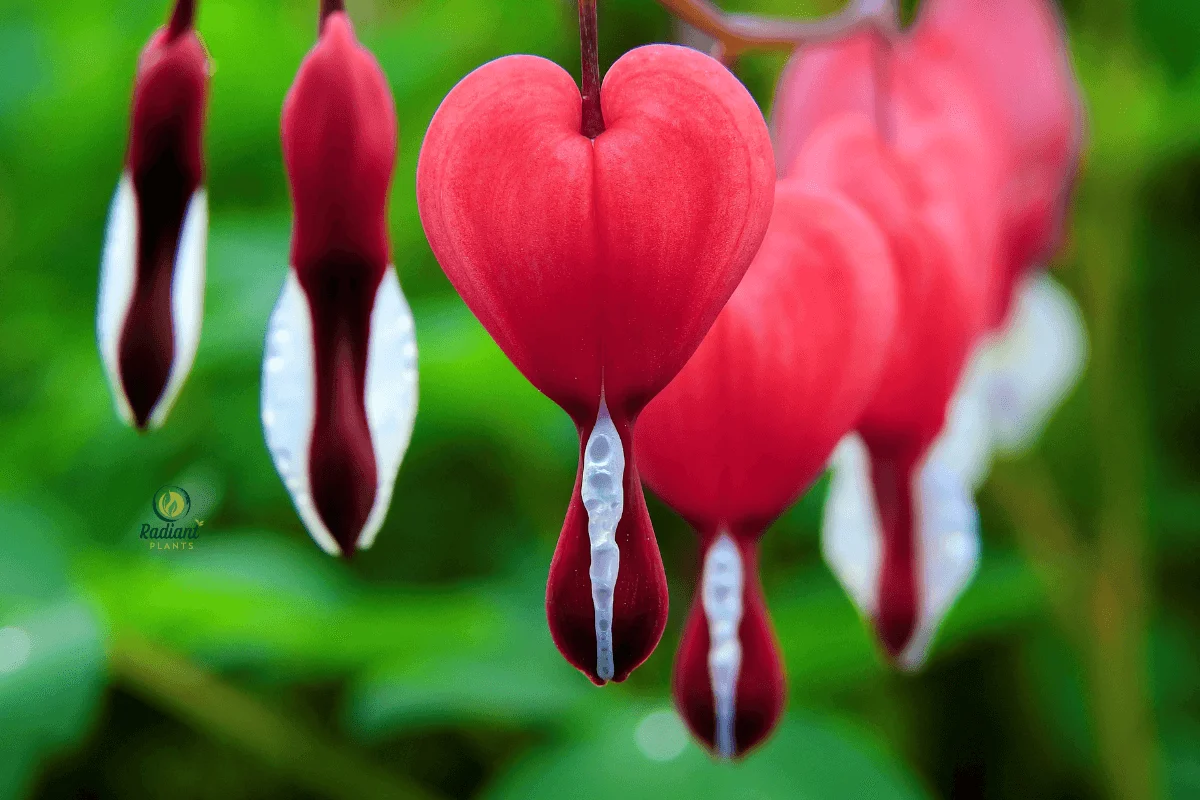
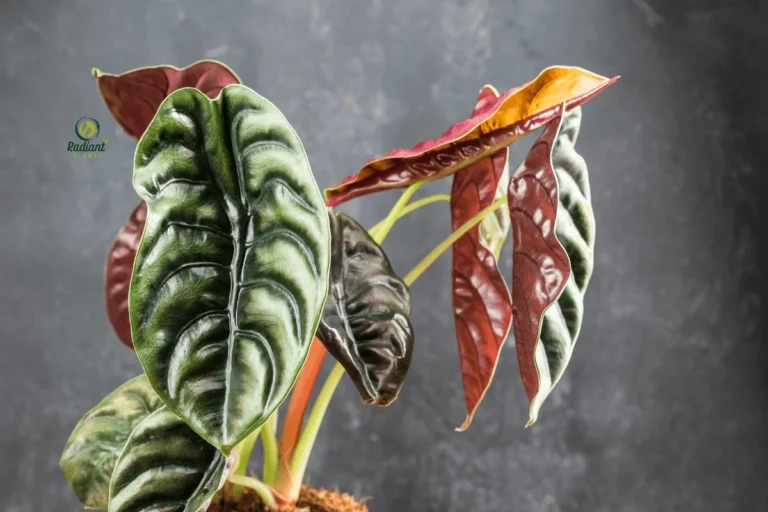
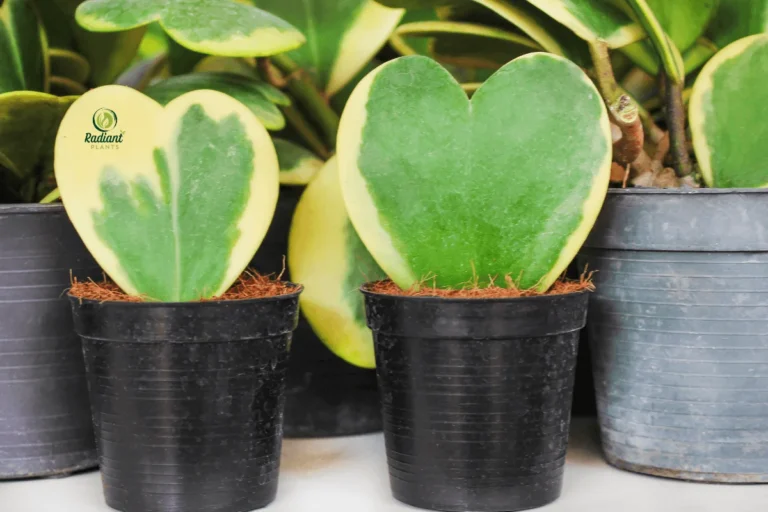
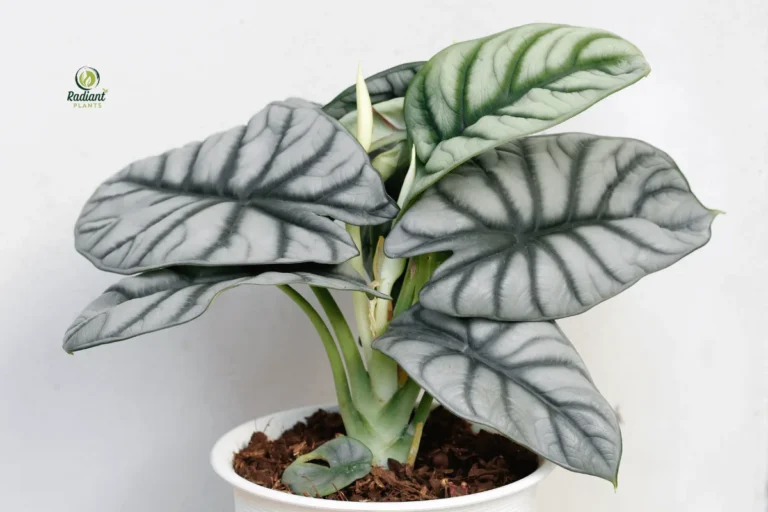
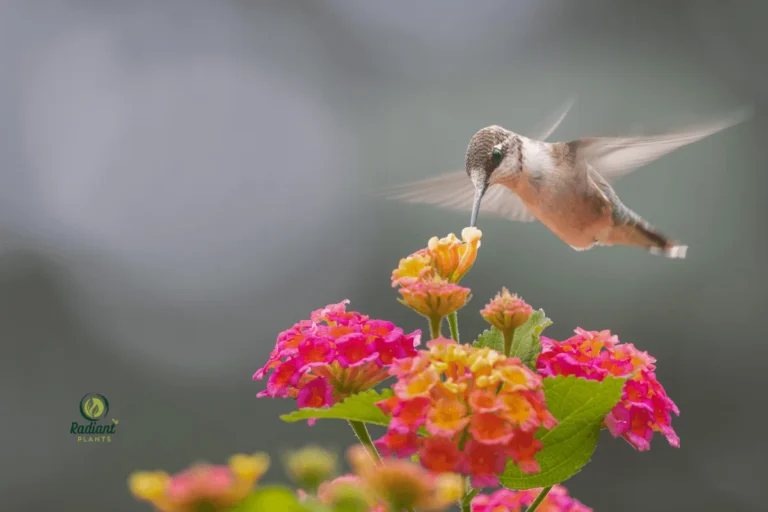
![Lighting needs for [Indoor Tree Plants] from bright windows to low-light corners](https://www.radiantplants.com/wp-content/uploads/2025/07/How-to-Choose-the-Right-Indoor-Tree-Plant-for-Your-Space-768x512.webp)
